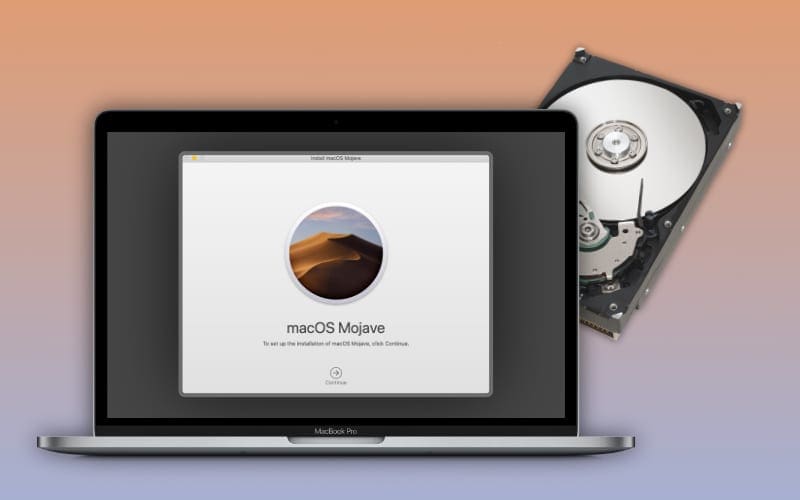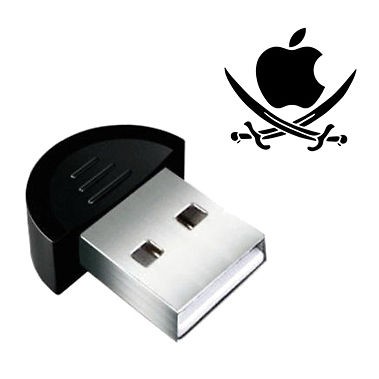Hackintoshes – PCs tweaked to run macOS with workarounds have been around for a while. But as Apple only wants its software to run on its own devices, it’s become more difficult over time to actually use them as functional machines. Now a new type of Hackintosh appears to be gaining some traction that may be useful for research and educational purposes, virtual Hackintoshes. Interestingly, a video of an iPad running macOS has just surfaced as the latest virtual Hackintosh.
On YouTube, Yevgen Yakovliev shared an almost 40-minute walkthrough of what appears to be macOS Catalina running on a 2020 iPad Pro. Notably, this isn’t a method of running macOS Big Sur on the iPad Pro’s A12Z ARM chip.
Building a CustoMac Hackintosh: The Ultimate Buyer's Guide When running macOS as your main operating system, supported and compatible components are extremely important. That is why we have created a large selection of example systems along with a comprehensive list of the best available hardware. Also, it is free on the App Store, follow step 1 to download and create a macOS Sierra USB installer. All you have to download follow all the steps mentioned below to install macOS Sierra 10.12 on PC. Create Bootable USB Installer For macOS Sierra. A Hackintosh (a portmanteau of 'Hack' and 'Macintosh') is a computer that runs Apple's Macintosh operating system macOS (formerly named 'Mac OS X' or 'OS X') on computer hardware not authorized for the purpose by Apple. 'Hackintoshing' began as a result of Apple's 2005 transition to Intel processors, away from PowerPC.
Yevgen is using the UTM app to run virtual machines on iOS devices, then has employed a process to create a virtual Hackintosh with a method shared on GitHub called OSX-KVM. KVM is an open source Kernel-based Virtual Machine utility built into Linux.
Described by RedHat: “Specifically, KVM lets you turn Linux into a hypervisor that allows a host machine to run multiple, isolated virtual environments called guests or virtual machines (VMs).”
Notably, Kholia who posted the OSX-KVM resources on GitHub notes in the README that they are looking for help documenting the process of “running macOS on popular cloud providers (Hetzner, GCP, AWS).” It’s possible this example of macOS Catalina running on iPad could be a cloud-based Virtual Hackintosh.
As for the legality of all this, Kholia shared the following:
The “secret” Apple OSK string is widely available on the Internet. It is also included in a public court document available here. I am not a lawyer but it seems that Apple’s attempt(s) to get the OSK string treated as a trade secret did not work out. Due to these reasons, the OSK string is freely included in this repository.
Please review the ‘Legality of Hackintoshing’ documentation bits from Dortania’s OpenCore Install Guide.
Gabriel Somlo also has some thoughts on the legal aspects involved in running macOS under QEMU/KVM.
 Mac OS X 10.7.1 Update: 11B2118 For the Mid 2011 Mac Mini and Mid 2011 MacBook Air Mac OS X 10.7.1 Update (for MacBook Air and Mac Mini 2011) 10.7.2 11C74 October 12, 2011 Darwin 11.2 About the OS X Lion v10.7.2 Update Adds iCloud, various bug fixes, minor user interface tweaks, Safari 5.1.1, and the ability to boot into Lion Recovery from a. The 'Early 2011' and 'Late 2011' MacBook Pro models use faster 1333 MHz PC3-10600 DDR3 SO-DIMMs. They officially support 8 GB of RAM, but OWC has determined that they actually support 16 GB of RAM regardless of the operating system installed, although only the 'Early 2011' MacBook Pro models are capable of running a version of Mac OS X 10.6.
Mac OS X 10.7.1 Update: 11B2118 For the Mid 2011 Mac Mini and Mid 2011 MacBook Air Mac OS X 10.7.1 Update (for MacBook Air and Mac Mini 2011) 10.7.2 11C74 October 12, 2011 Darwin 11.2 About the OS X Lion v10.7.2 Update Adds iCloud, various bug fixes, minor user interface tweaks, Safari 5.1.1, and the ability to boot into Lion Recovery from a. The 'Early 2011' and 'Late 2011' MacBook Pro models use faster 1333 MHz PC3-10600 DDR3 SO-DIMMs. They officially support 8 GB of RAM, but OWC has determined that they actually support 16 GB of RAM regardless of the operating system installed, although only the 'Early 2011' MacBook Pro models are capable of running a version of Mac OS X 10.6.
You may also find this ‘Announcing Amazon EC2 Mac instances for macOS’ article interesting.
This is similar for macOS to what Apple took Correllium to court over with the latter offering iOS virtualization. Just last month, Corellium won part of the lawsuit.
Kholia also highlights:
My aim is to enable macOS based educational tasks, builds + testing, kernel debugging, reversing, and macOS security research in an easy, reproducible manner without getting ‘invested’ in Apple’s closed ecosystem (too heavily).
These Virtual Hackintosh systems are not intended to replace the genuine physical macOS systems.
Yergen also cited this post on virtualizing OpenCore and x86 as helpful in their work to get macOS working on the iPad Pro.
FTC: We use income earning auto affiliate links.More.
Hackintosher
Administrator
- Joined
- Jan 21, 2018
- macOS
- 10.15.0
- Mobo
- Gigabyte Z370N WIFI
- CPU
- i3-8100
- GPU
- UHD 630 Graphics
For all these steps you will need to edit your config.plist. When messing around with the SBMIOS settings it's recommended create a backup first before proceeding:
- Mount your EFI partition with Clover Configurator
- Navigate to /Volumes/EFI/EFI/Clover/kexts/Other
- Backup your config.plist by making a duplicate copy of it and renaming the backup something else i.e. config-smbios-backup.plist
- Right-click config.plist and open with Clover Configurator
- Click SMBIOS on left side
- Copy the Serial Number
- Go to checkcoverage.apple.com
- Paste Serial Number and click Continue
- If it comes back as valid you will need to generate a new serial number until you get a error or invalid serial number
- Go back to Clover Configurator SMBIOS section
- Repeat Generate New and paste to checkcoverage.apple.com until you get an Invalid Serial Number
 2. Board Serial Number
2. Board Serial NumberNow that you have your own invalid serial number you need to replace the Board Serial Number with one containing your Invalid Serial Number along with 5 random digits. Since they can be any digits I keep the last five digits of the Board Serial Number and replace the first 12 with the Serial Number
- Copy Serial Number
- Replace the first 12 digits of Board Serial Number with the copied Serial Number
- Open Terminal
- Generate a unique string by entering uuidgen into Terminal
- Copy & Paste the generated UUID value from Terminal into SmUUID in Clover Configurator -> SMBIOS
- Save config.plist
- Restart Hackintosh

- Select RTVariables in Clover Configurator
- Set ROM value to UseMacAddr0
Hackintosh Usb Mojave
RTVaraibles -> MLB can be left blank once the steps are followed. You can also use one off a valid Mac that you own if you wish, but it is not required or experiment with an MLB generator if you wish, but again following the steps above you shouldn't have any issues with simply leaving MLB blank.BooterConfig
Hackintosh Usb Wifi
- Set RTVariables -> BooterConfig to 0x28 for Intel for a AMD/Ryzen machine leave it at the value it's already set at.
 CsrActiveConfig
CsrActiveConfig- CsrActiveConfig or SIP should be left in the disabled state i.e. 0x67 for more information see: Enable & Disable System Integrity Protection (SIP) on a Hackintosh
